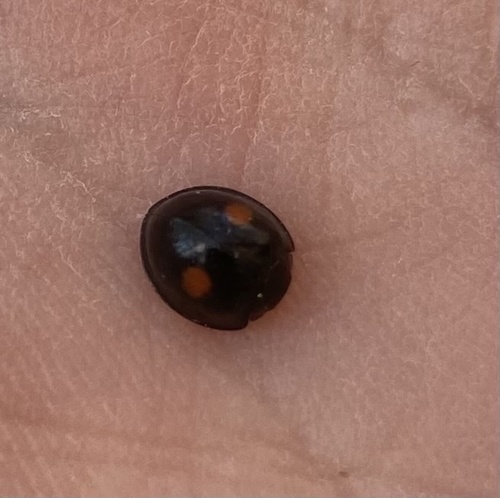Saturday, April 07, 2018 from 9 am to 11 am
Today was a beautifully sunny day with temperatures in the low 40’s. We decided to head out to Lagoon Road in Hinesburg to look for migrating shorebirds. The habitat there is a prime location for shorebird migrants, as there are open, flooded fields with lots of sedge clumps and some open water areas. On the way home, we stopped at Carse Wetlands, which has multiple different habitat types, from open field, to forest, to open water.
We had quite a successful day. As we arrived at Lagoon Road, we immediately saw two Eastern Meadowlark, which was incredibly exciting, as it was a lifer for several people in our group. After watching them for a while, we got out of the car and walked around, seeing 14 Canada Geese, 4 Mallard, 1 Turkey Vulture, 7 Killdeer, 1 American Crow, 2 Common Raven, 15 European Starling, 6 Song Sparrow, 5 Red-winged Blackbird, and 2 Common Grackle. As we were leaving the area, we were pleased to discover a Red-tailed Hawk and a Northern Harrier, swooping over the field. Then, the highlight of the trip: “SNIPE!!” yelled one of my friends. Sure enough, there were 8 Wilson’s Snipe among the sedge clumps, gazing at us with their beady eyes and disproportionately large bill.
The Killdeer, being a facultative migrant, looked very out-of-place running around in the field covered a few inches of fresh snow from the night before. However, the Killdeer were not fazed, as they begin arriving to their summer breeding range (which spans from New York and Pennsylvania to Nebraska and north through New England, the northern-most mid-western states and across much of Canada) in mid-March, with migration peaks in April. Killdeer are found year-round across much of the United States and Mexico, with some migrating to Central and South America during the winter. Killdeer migration is highly variable, as many birds only move as far south as they need to find food and have access to open water. Killdeer diet consists primarily of invertebrates, like earthworms, grasshoppers, beetles, and aquatic insect larvae, so they do not stay in completely frozen areas where these resources are unavailable. When the snow retreats, Killdeer are able to migrate north and exploit the invertebrates that come to life with the unthawed ground. The plethora of available food sources and breeding space makes migration north for the spring and summer attractive to portions of the population, because an increase in habitat area and available resources leads to a reduction in intraspecific competition.
In contrast to Killdeer, American Crows are residents in Vermont. Although Killdeer are relatively opportunistic feeders, they generally stick to invertebrates, which results in their migration during the winter. American Crows are generalists and completely opportunistic when it comes to feeding, an adaptation that allows them to remain in Vermont during the winter. Additionally, American Crows roost in huge flocks during the fall and winter. There are a number of hypotheses as to why they do this, including information of productive foraging sites (which helps them get through the lean winter months), protection from predators, and protection from the elements. Additionally, American Crows have adapted to roosting in urban areas, again hypothesized to occur for a number of reasons. First of all, American Crows may have figured out that they cannot get shot in urban areas, and may be taking advantage of that. Second of all, urban areas are generally 5 to 10 degrees F warmer than the surrounding countryside, which helps them survive cold winter nights. Finally, roosting in cities provides protection from predators (particularly the Great Horned Owl), both because Great Horned Owls avoid urban areas and the artificial light helps American Crows watch for them.
After we finished birding at Lagoon Rd., we zipped over to Carse natural area. While there, we saw 5 Canada Geese, an American Crow, 2 Black-capped Chickadees, 3 Eastern Bluebirds (first of the year for me!!), 6 Cedar Waxwings, and 2 Song Sparrows. In my excitement about the return of the migrants, I began thinking about the distance these birds traveled. Eastern Meadowlark migration is variable, but those in Vermont will often travel over 621 miles from the southern United States back to Vermont. Canada Geese will migrate as far as 3,000 miles when moving from wintering sites in the southern United States back to the northern regions of their range. Migratory Mallards travel over 700 miles on average when returning to the north after wintering in the southern United States. Killdeer in Vermont must migrate back from Mexico and Central America, with distance averaging at 4,037 miles. Song Sparrows migrate to southern United States and Mexico during the winter, with a return flight averaging at 528 miles. Red-winged Blackbird average migration distance is 53 miles. Northern Harrier migrate depending on food availability, with return flights from southern U.S. and Central America averaging at 2,630 miles. Wilson’s Snipe migration from southern U.S. and Central America back to Vermont averages around 2000 miles. Eastern Bluebird overwinters in southern states, such as Texas, and have a return flight around 1,978 miles. When added together, these migrants traveled over 15,500 miles!
Source Links:
http://www.birds.cornell.edu/crows/crowfaq.htm
https://sora.unm.edu/sites/default/files/journals/jfo/v049n01/p0017-p0034.pdf
http://www.birds.cornell.edu/Page.aspx?pid=1478










